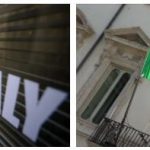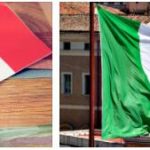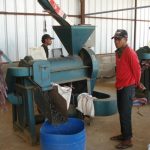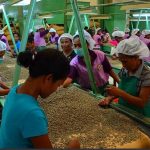
Economic Activity within and outside the Italy Peninsula Part 3
But next to them, the very numerous stable population nuclei, which usually are part of a larger city, but sometimes constitute a city in itself, distinct from the other, as in Altoluogo, near ancient Ephesus, at the mouth of the road Baghdād-Constantinople on the Aegean, where, in the 1300s, the Turkish city is high up and the Italian city along the marina. They are the true colonies of the new mercantile bourgeoisie, true offshoots of the motherland, with institutions modeled on those of Pisa or Genoa or Venice, with the church consecrated to the same patron deity. According to localcollegeexplorer, the colonists enjoy free trade, exemption from taxes, and their own tax income. Often, as in Syria, where this complex of privileges was greater than elsewhere because those colonies were more important; often, even a fair area of land around, grown by natives for the Italian owner. Usually, these nuclei of Italians are attached to the coast or to the nearby hinterland: and there, they await the goods brought from the interior. But often, from there they radiate inwards. In the 13th century, in Iconium, in the center of Anatolia, the trade of some commodities was a monopoly of Venetians and Genoese, who maintained very close contacts with the Greek emperors, in the sixty years that they had their residence there. And Venetians, Genoese, Pisans, Piacentini try the ways of Little Armenia, from the ports of Cilicia, especially from Laiazzo; they do the caravan trade for Anterior Asia and Persia. Some Italians go as far as the heart of Muscovy: and in 1300, they are found in Novgorod, with the most numerous German merchants. But the greatest pilgrimage, in the interior of a boundless continent, it dates back to the second half of the 13th century, precisely of the time which, in many respects, marks the greatest thrust. the mercantile activity of Italians. After Giovanni da Pian dei Carpini, Umbrian, one of the companions of S. Francesco; after Giovanni da Montecorvino, who represented the diplomatic-religious penetration of the papacy and Roman Catholicism among the Tatars of Asia, here are the Venetian Polos: Marco Polo, especially, totius orbis et Indiae peregrinator primus .
Different picture, in the West, in the same period or a little later. Here the Italians are only merchants, money changers, bankers. Very early, they are seen in Portugal and Spain, in Barcelona and Aragon: Genoese and Tuscans, especially from Pisa and Florence. Then they turned to France. And France became a land of good business for Italians, Piedmontese, Lombards and Tuscans: first Champagne and southern France, where in the second ‘200 merchants from Guelph cities, especially Lucchesi, found good protection; then, in western France, in Paris. And that bond of the Florentines with the land of France began to be knotted, which would later make Florence one of the points of support for French politics and penetration in Italy. There, a propitious field for loans and usury and a good school of commercial practice. At the end of the 13th century, England also opens up to Italians, for the trade of money, wool, oriental goods. Meanwhile, other Italians cultivate Flanders, others Germany. From Germany and Flanders they arrive in Hungary and Poland, where they meet other Italians who come from the Black Sea.
Of course, their greatest importance, in terms of numbers and functions, is in Western Europe, to some extent, in Central Europe. Agencies and agents, business relations and capital movements have in Lyon, Marseille, Nuremberg, Augusta, Troyes, Bruges, Paris, Barcelona, London, elsewhere. A true aristocracy is formed, which is money and intelligence at the same time, and exercises European action for a couple of centuries or more, before many doors close or itself wear out in the face of changed conditions of the new national economies. It counts the Scarampi, the Soleri, the Malabaita of Asti, the Crivelli, the Taverna, the Pozzobonelli, etc., of Milan; the Ricciardi, the Cenami, the Arnolfini, the Rapondi, the Bonvisi, the Burlamacchi of Lucca; the Salimbene, the Gallerani, the Tolomei, the Bonsignori, etc., of Siena; the Bardi, the Ardinghelli, the Peruzzi, the Acciaiuoli, the Albizzi, the Cavalcanti, the Sassetti, the Frescobaldi, then the Medici, of Florence. They come from the ranks of the consular patriciate and, some are urbanized rural nobility, since land and urban areas, which grew very and rapidly in value after the century. XI, have not a little contributed to the formation of capital; or they come from small traffic, from the exchange of money, from the wool mill. However, they are the financial powers of the time, relatively, and sometimes absolutely, great powers, even in politics. History remembers kings and barons: but behind them, advisers, financiers, financiers, here are these very shrewd Italians, who know how to adapt to place and time, to be humble and proud, violent and cunning.







